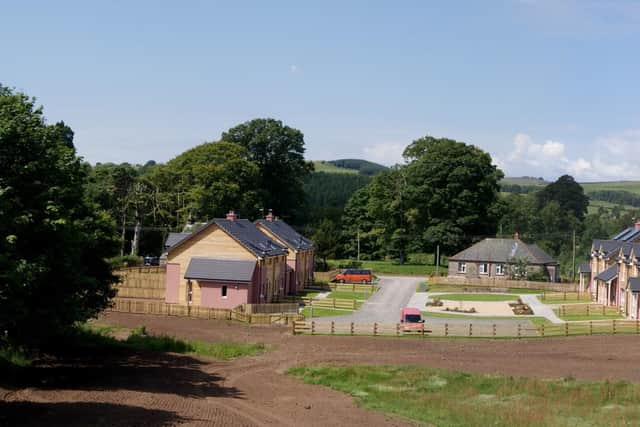The Scottish eco-homes benefitting renters and the planet
Jamie Carruthers is head of the latest in 13 generations of his family to live at Dormont, a small rural estate near Lockerbie, in Dumfries and Galloway.
The property is run with a mixture of uses, including fishing, game shooting, farming, forestry and holiday lettings.
Advertisement
Hide AdAdvertisement
Hide AdMore than a decade ago he built eight new houses on the property with the aim of providing affordable good-quality long-term rental accommodation for local people.


In the process he became the first private landlord in Scotland to create new homes with exacting Passivhaus-certified credentials, making them highly energy-efficient and cheap to run.
People living in the borders region of Scotland have some of the lowest income levels in Scotland, so there is strong demand for affordable homes.
All the dwellings are fitted out with roof-mounted solar thermal panels, and the interiors are airtight and well-insulated with triple-glazed windows to avoid heat-loss.
Each has a log-burning stove as the only form of heating and relies on heat exchanger technology to keep the inside temperature and air moisture content at optimum levels.
The architect-designed timber-framed houses were manufactured off-site by green construction firm CCG before being erected at Dormont.
The exteriors are part roughcast and part timber-clad, giving them a modern look that stands in contrast to the other more traditional buildings on the estate.
When commissioning the Dormont houses, four with two bedrooms and four with three bedrooms, Mr Carruthers was determined they should be cost-effective and have a minimal impact on climate change whilst also standing the test of time.
Advertisement
Hide AdAdvertisement
Hide Ad“I wanted to be innovative and future-proof the houses,” he said.
“The answer is a fabric-first approach and insulate to the max.
“The mantra is: the greenest kilowatt hours is the one you don’t use.
“If you make sure the homes are as draught-free and well-insulated as possible they’re cheap to run and better for the planet.”
There are a mixture of people of different age groups living in the houses at Dormont, with rents based on local housing association rates.
Most of the tenants have been attracted by the rural location, surrounded by scenic landscapes and wildlife galore.
“There has always been demand for rural property,” Mr Carruthers said.
“Folk move here out of preference, not because they have no choice.
Advertisement
Hide AdAdvertisement
Hide Ad“Some people are retired, some have young families and some just want to live in the countryside because it’s healthier and more picturesque.”
Mr Carruthers built the £1.5 million development with the aid of a 45 per cent government grant.
A message from the Editor:
Thank you for reading this article. We’re more reliant on your support than ever as the shift in consumer habits brought about by coronavirus impacts our advertisers.
If you haven’t already, please consider supporting our trusted, fact-checked journalism by taking out a digital subscription.
Comments
Want to join the conversation? Please or to comment on this article.
